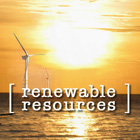
|
DYE-SENSITIVE SOLAR CELLS, DEVELOPED AT OHIO STATE UNIV., COULD BE FUTURE OF GREEN POWER 3 August 2007 As environmental groups, lobbyists and the general public push for more environmentally friendly industrial practices, scientists are finding innovative ways to bring down costs and increase the efficiency of renewable resources. The dye-sensitive solar cells (DSSC), with a pinkish sheen, now being developed at Ohio State University, are an example of the type of engineering innovation that could bring about a genuine green-power revolution. One of the major complaints of the existing fuel-production and distribution industry, which has until now heavily favored combustible fuels, has been that solar-voltaic power is too costly to produce at an economical price. The dye-sensitive system means that complaint may now be irrelevant, and a thing of the past. We could be seeing the dawn of a new age in renewable energy. Traditional silicon-based solar cells are blue in color due to an anti-reflective coating designed to enhance absorption of green light, the strongest wavelength in the solar spectrum. But DSSC panels are able to adjust their color to adjust absorption of solar light; adjusting to the pinkish-red hue created by the red ruthenium dye seems to produce the best results in experiments with a new kind of DSSC. As reported at PhysOrg.com, "In DSSCs, dye molecules coat tiny metal oxide particles that are packed together into a thin film. The dye molecules capture light energy and release electrons, and the particles act like electrical wires to carry the electrons away to an electrical circuit. [...] But electrons can get lost when traveling between particles. That's why Wu is working on designs that incorporate tiny nano-wires that carry electrons directly to a circuit." The new materials applied by Professor Wu and his associates are more complex, and therefor appear to produce electricity more efficiently. For instance, zinc stannate, which is the basic ingredient in the new DSSC panels, allows for "tuning" of the properties by which it collects and conducts energy from solar radiation. That tuning means the panels can be adapted to increase efficiency under distinct circumstances. Nano-wires that permit the enhanced conductivity of the materials within the DSSC panel may be more efficient still if shaped in a manner appropriate to the task. Professor Wu has said "We asked ourselves, what structure is best for gathering light and also transporting materials — a tree! The leaves provide a high surface area for capturing light, and the branches transport the nutrients to the roots". Wu adds that "In our DSSC design, the dye-coated particles would provide the surface area, and the nano-trees would branch out in between them, to transport the electrons." This allows for an increase in the overall efficiency of the new DSSCs. When they reach double the best-to-date efficiency in testing, they will equal silicon solar cells in output, and will effectively become the new technology. Possible applications for the new solar cells range from more efficient solar farms, increased availability of solar-based self-sufficient household generation, the development of affordable, efficient solar-powered electric cars, and cladding for the exterior of large office buildings. The technology could also be used, some believe, to reduce or eliminate the carbon "footprint" of other renewable resources, such as aeolic or wind-turbine generation. Wind turbines require a lengthy industrial production process, which tends to rely at present on traditional fossil-fuel-powered production methods. If the carbon cost of new power resources can be affordably reduced or eliminated, the ability to produce these alternatives to fossil fuels would progress rapidly. Such supplemental cost-reduction and pollutant-removal would also mean the DSSC panels would be a viable "mainstream" option for transitioning from a petroleum-based economy to a renewable-resource-based economy. Industrial production of the panels also demonstrates how new directions in technology mean the economy continues to adapt and expand as it assimilates new ideas, new skills, and new job opportunities for potentially millions of people. One plant is already being built in England to begin mass production of the characteristically pink DSSC panels. [s]
GEOTHERMAL: WEST DIGS DEEP FOR THE NEXT BIG THING IN POWER Geothermal energy is increasingly being touted by scientists and researchers as one of the most efficient and environmentally friendly sources of power available. Currently, geothermal sources supply enough energy, 2,800 megawatts, to run 2.8 million American homes. The potential of geothermal energy in the US is even greater than once believed, at an estimated 13,000 megawatts over the next 10 years; but only the western states of Utah, Nevada and California have active geothermal power stations.
|
|||||||||||||||||||||||
|
||||||||||||||||||||||||








